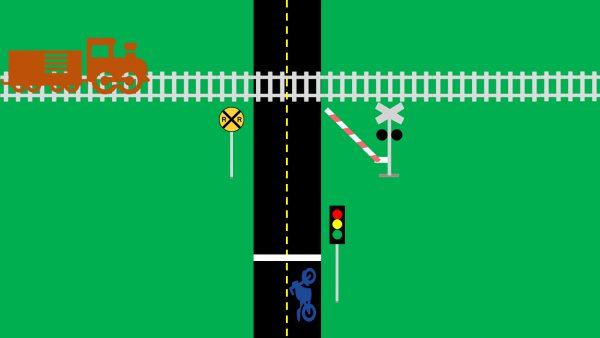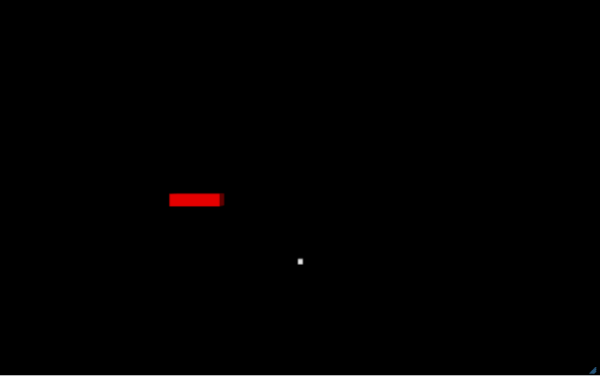Table of Contents
Beating the Train
Activity Description
Learning Goals
- Use Newton's 2nd Law to accurately predict changes in motion of macroscopic objects ( HS-PS2-1)
- Use kinematic equations to determine the necessary acceleration to move an object
- a certain distance
- for a certain amount of time
Prior Knowledge Required
- Units
- Kinematic Equations
- Newton's 2nd Law of Motion
- $F=ma$
Code Manipulation
- Modify existing code
—-
Activity
Handout
 Beating the Train
Beating the Train
A train is approaching a crossing, traveling at a constant velocity if 15 m/s to the east. You are on an afternoon ride on your motorcycle when you get stopped at a stoplight 50 m south of the crossing. At the instant the light turns green, the train is 90 m west of the crossing. Your mass, including the motorcycle, is 400 kg
- Determine the amount of time required for the train to reach the crossing.
- Using the time found in #1, determine the minimum acceleration required for you and your motorcycle to beat the train and safely cross to the other side.
- Given a frictional force of 100 N that opposes you as you accelerate to the train crossing, what is the minimum force exerted by the motorcycle that is necessary to miss the train?
- Modify the Colliding Crates program to fit this scenario.
Code
Answer Key
Handout

- To find the time it will take for the train to reach the crossing, divide the distance between the train and the crossing by the velocity of the train:
- $t=\dfrac{90\text{m}}{15\text{m/s}}=6\text{s}$
- We can use the following kinematic equation to solve for the minimum acceleration required to beat the train: $x=x_{0}+v_{0}t+\dfrac{1}{2}at^2$
- where:
- $x$ is your final position
- You must travel 50 m
- $x_{0}$ is your initial position
- We can assume we start at 0 m
- $v_{0}$ is your initial velocity
- you start from rest, so $v_{0}=0$ m/s
- $a$ is your acceleration
- We will solve for this
- $t$ is the time you have to beat the train
- We just calculated this to be 6 seconds
- Rearranging to solve for acceleration:
- $a=\dfrac{2(x-x_{0}-v_{0}t)}{t^2}$
- Plugging in our known values:
- $a=\dfrac{2(50\text{m}-0\text{m}-0\text{m/s}*6\text{s})}{(6\text{s})^2}=\dfrac{100\text{m}}{36\text{s}^2}=2.78\text{m/s²}$
- To find out the minimum force your motorcycle must exert, we must first create a free body diagram. From this diagram, we know that the sum of the frictional force $F_{f}$ and the force of your motorcycle $F_{m}$ must be equal to the total mass of you and the motorcycle (400 kg) multiplied by the acceleration we just calculated (2.78 m/s²). Mathematically, this looks like:
- $F_{f}+F_{m}=ma$
- Solving for the force of your motorcycle:
- $F_{m}=ma-F_{f}$
- Plugging in our known values:
- $F_{m}=400\text{kg}*2.78\text{m/s²}-(-100\text{N})=1212\text{N}$
- Note that $F_{f}$ is negative because it points in the negative y-direction. This is determined from your free body diagram
- See below
Code